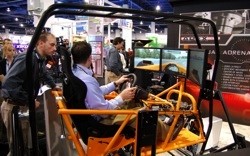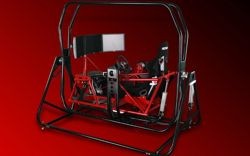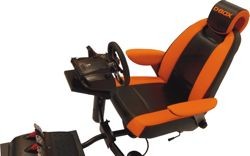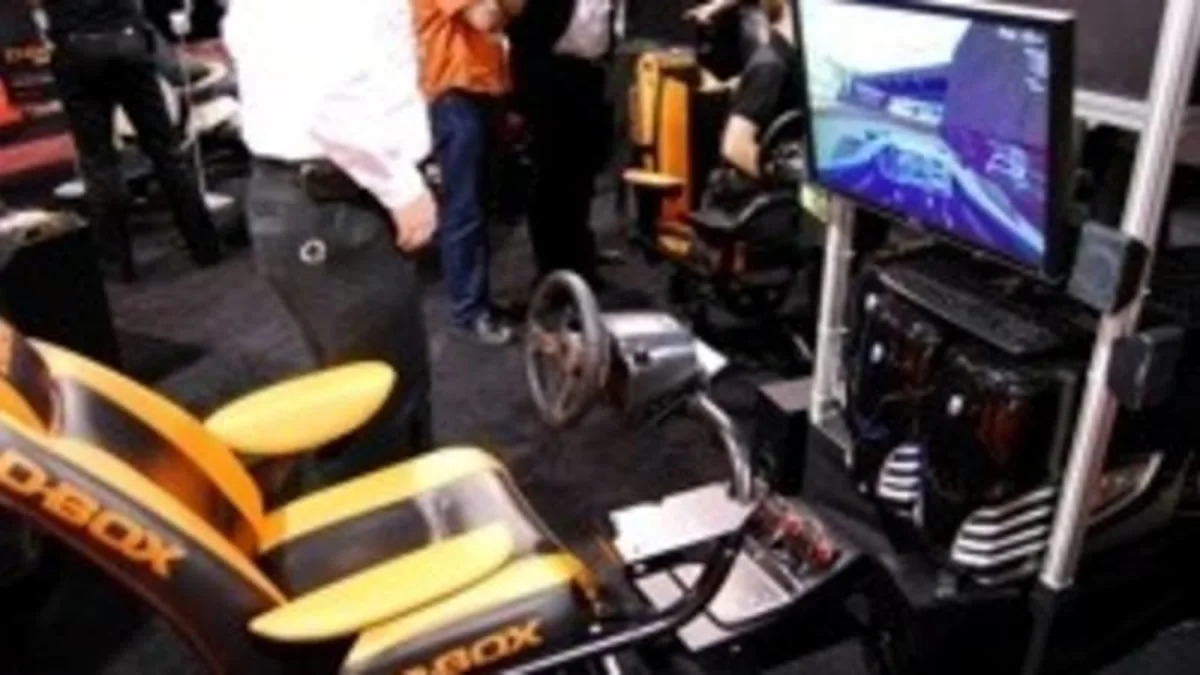
They're more than glorified game consoles with force-feedback steering wheels strapped to a lounge chair. Costing as much as $44,000 apiece, they're racing simulators, and we got to play with a couple of them at CES.
Simcraft says its $44K model is meant for training real race car drivers, like Indycar driver Sarah Fisher, who stopped by CES on Wednesday to show off the company's Apex SC830. The U.S. military is also using the high-dollar simulator to train its soldiers to drive in the tricky sands of Iraq. D-Box's top-of-the-line GP Pro 200 is a much more affordable high-end racing simulator. It'll only set you back $14,000.
Both are PC-based and both offer much more realism than your Laz-E-Boy being moved around by your little brother. The SC830 is definitely more hardcore, with the seat and displays mounted on a tubular-steel frame. The GP Pro 200 sits lower, is more compact and looks less complicated than the Simcraft. But how do they drive? Click through to the jump to read our impressions and for more photos.


Getting into the SC830 was a bit like climbing into a race car with a 12-inch lift kit. There's a step up onto the simulator's frame where you can grab the rollbar to swing into the seat. Ms. Fisher probably has plenty of room in there, but for those of us who drink an ale now and then, it's snug. Once in the seat, the steering wheel is lowered over your legs and the race is on. There's a clutch pedal, but for simplicity we chose paddlie shifters instead. Our first trip around Lowe's Motor Speedway was mostly uneventful and had us wondering why NASCAR drivers get paid so much. With all the pitching and rolling, the simulator felt more like a carnival attraction than a racecar. Steering feel is jerky, making it difficult to judge corner entry. The SC830's three degrees of movement (roll, pitch, yaw) should theoretically give a feeling of realism worth that $44,000 price tag, but with only a few minutes in the seat, it's hard to say.
The D-Box system's orange seat is much easier to enter. Just walk up, sit down and drive. We chose paddles over clutch again, but raced a more complicated track. There was much less motion in the seat than we experienced in the Simcraft, but the sound was clearly better. That and the fact the twistier circuit was more enjoyable puts the $14,000 D-Box on top on our leaderboard. The D-Box uses three actuators to achieve its motion simulation, but a company rep said feedback they've gotten from actual race car drivers might lead to the addition of a fourth rear actuator to better simulate the feel of the rear tires.
Both D-Box and Simcraft have the more budget-minded customer in their sights. At CES, D-Box announced the GPH-120 model, which will sell for $3,000 later this year. It uses two (instead of three) actuators but can still simulate 2Gs of acceleration. The same D-Box rep said they're hoping to announce Xbox compatibility soon.
Simcraft tells us they're currently working on a more budget-oriented simulator that would also sell in the $3,000 range. Consumers will undoubtedly appreciate Its planned collapsible frame, too. They expect to begin selling their new model in 18-24 months.


Sign in to post
Please sign in to leave a comment.
Continue